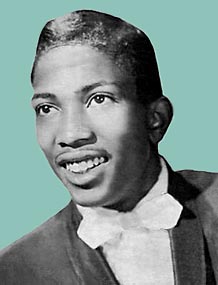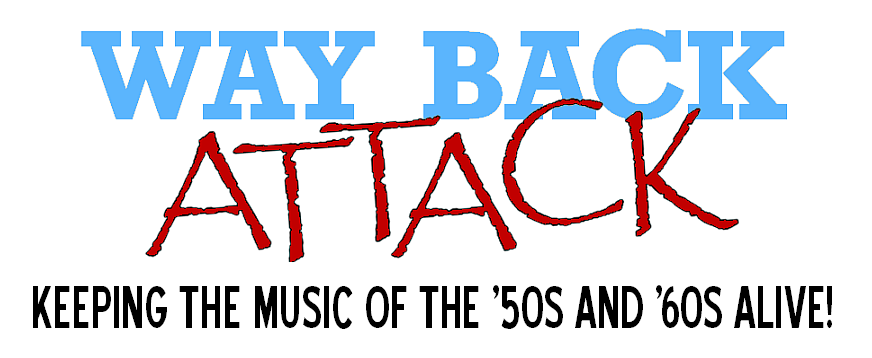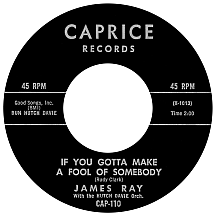JAMES RAY
If You Gotta Make a Fool of Somebody
Making the move from Washington, D.C. to New York City in 1959, aspiring just-turned-18 singer James Ray Raymond was ushered into a recording studio shortly after arrival, resulting in a single for Gallant, one of George Goldner's labels from the Gone/End/Gee group. As Little Jimmy Ray (his general appearance similar to short-in-stature hitmaker Little Willie John, though vocally they were quite dissimilar), his A side ballad "Make Her Mine," written by singer and Chantels mentor Richard Barrett, was flipped with "You Need to Fall in Love," penned by Raymond, its melody and arrangement a blatant imitation of John's signature tune "Fever." But as easy as it had been to break into the business, so was it tough going for the next two years.
James pounded the Big Apple pavement for many months after that one unsuccessful bid, occasionally working in small nightclubs but mostly singing on street corners and, for a time, living on the streets. A music-obsessed mailman, Rudy Clark, saw him in a club in 1961, which ultimately worked in James's favor. When Gerry Granahan, founder of the recently-established Caprice Records, showed interest in some of Clark's songs but didn't feel he had a voice for recording, Rudy tracked down James, who'd been sacking out on the roof of an apartment building, and took him to audition for Granahan. Caprice had gotten off to a good start that year with hit singles by a pair of female acts from New Jersey, Janie Grant ("Triangle") and The Angels ("'Til"). Taking a simplified and less juvenile name, James Ray scored the label's third big hit.
"If You Gotta Make a Fool of Somebody," the best song in Clark's repertoire, benefited further from an oddball arrangement by Hutch Davie (whose first notable accomplishment was co-composing "The Green Door" and pounding the piano on Jim Lowe's number one hit version in '56). Many of Davie's arrangements went against trend; he often made clever use of horn sections (trumpet blasts, trombone accents). The recording was produced as a waltz and emphasized the tuba and harmonica as lead instruments. The whole thing could have gone horribly wrong, but didn't; Ray's distinctive vocal performance came almost as an afterthought. "If You Gotta" hit the national charts in November 1961 and spent several weeks in the top 30 in January and February '62 while reaching the top ten of the R&B charts. Flip side "It's Been a Drag" wasn't strong on airplay but Ray's reading of the song's downer message rang true.

Clark composed the follow-up, "Itty Bitty Pieces," which contrasted Ray's gritty vocal sound against pop backing singers and a more conventional band arrangement than its predecessor. A lesser hit, it just missed the top 40 in mid-May. Around this time James popped up in an unlikely place: Janie Grant's spoof of Vitalis hair tonic, "That Greasy Kid Stuff," poked fun at the infamous 1871 meeting of explorer David Livingstone and H.M. Stanley in Africa. James supplied the obvious spoken line 'Dr. Livingstone, I presume!' (Janie chiming in with '...are you still using that greasy kid stuff?') and made his last, albeit uncredited, appearance on the charts. The next James Ray single, "A Miracle," fell far below expectations, after which he was switched to Granahan's Dynamic Sound label for "I've Got My Mind Set on You," another Rudy Clark song, a failure for Ray but not, as it turned out, for another well-known singer many years later.
While James Ray attempted in vain to build on his promising start, British musicians were busy spreading the word about his songs. The Beatles, still pounding the Liverpool pavement in early '62 (and paying their dues in Hamburg, Germany at the Star-Club), began including "If You Gotta Make a Fool of Somebody" in their set; fascinated by Ray's hit and its mesmerizing harmonica, they used it as a blueprint for their own debut single, "Love Me Do," recorded that summer. A rousing performance of "If You Gotta" at Liverpool's Cavern Club in September did not go unnoticed by Freddie and the Dreamers, who were on the bill that night; a somewhat soulless recording of the song became the first major U.K. hit for Freddie and company in the spring of 1963. U.S. artists had a fondness for the tune as well; Calvin Grayson's remake appeared on Capitol in the summer of '65 and Maxine Brown charted with her version at the end of the year. Some went the "Itty Bitty Pieces" route; The Rockin' Berries released a pop version in late 1963, followed a few months later by Chris Farlowe and the Thunderbirds' bluesy variation.
James Ray's later efforts appeared on the Congress label and included "Do the Monkey" (written by Clark with occasional collaborator Bobby Darin) and his final single, "We Got a Thing Goin' On," in 1964. Ray's death occurred sometime afterwards, a drug overdose being the most commonly believed cause. Even the date of this tragedy is uncertain, but he wouldn't have been much older than his mid-twenties, a talented singer mysteriously taken too soon.
Rudy Clark pushed on and realized his dreams, authoring several indelible classics including "The Shoop Shoop Song (It's in His Kiss)" (a super-size '64 hit for Betty Everett), "Good Lovin'" (penned with Arthur Resnick, it was a hit for The Olympics in '65 and a Young Rascals chart-topper a year later), "Everybody Plays the Fool" (The Main Ingredient's signature smash in '72, cowritten with J.R. Bailey and Ken Williams) and solid soul shots for Chuck Jackson, Mary Wells and Wilson Pickett, among others. For years, Beatle George Harrison had planned to record one of his favorite songs, "Got My Mind Set on You" (retitled slightly from Ray's 1962 original); in 1987 he finally did and in January '88 it became the second number one hit in the songwriting career of Rudy Clark, simultaneously renewing interest in the superbly unique recordings of James Ray.


